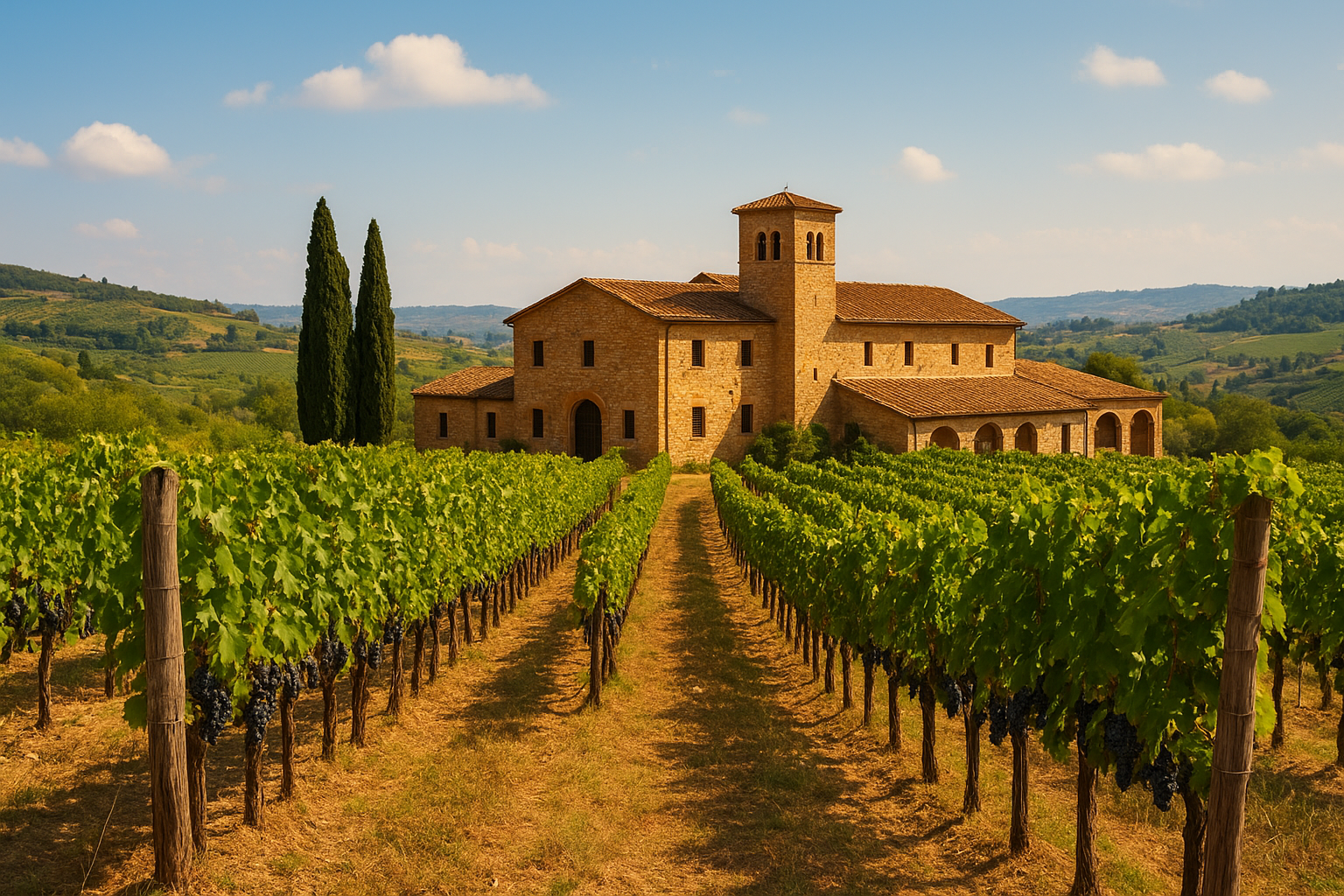Italy’s Best Wines and Wineries from Various Regions: A Journey Through the Heart of Italian Viticulture
Introduction to Italy’s Wine Heritage
Italy’s connection to wine runs deep — it’s not just a drink here, it’s a way of life. With over 4,000 years of winemaking history, Italy stands among the top wine-producing countries in the world. From the snow-capped Alps in the north to the sunny Mediterranean coasts in the south, every region contributes its unique flavor, aroma, and character to Italian wine.
Italy produces an astonishing 45–50 million hectoliters of wine annually, encompassing over 350 official grape varieties and 20 diverse wine regions. This diversity, combined with ancient traditions and modern innovations, makes Italy an unmatched destination for wine lovers across the globe.
The Diversity of Italian Wine Regions
Italy’s wine map is a masterpiece of geography, climate, and culture. The country is divided into three main winemaking zones — the north, center, and south — each offering distinctive grape varieties and wine styles.
Northern Italy – Cool Climate Elegance
Northern Italy’s cooler climates, influenced by the Alps, yield crisp whites and refined reds. The most famous wine regions here include Piedmont, Veneto, and Trentino-Alto Adige.
Piedmont – Home of Barolo and Barbaresco
Piedmont, nestled at the foot of the Alps, is Italy’s Burgundy. The star grape here is Nebbiolo, known for its powerful tannins and floral aroma. The region’s crown jewels, Barolo and Barbaresco, both carry DOCG status — the highest Italian quality designation.
Top wineries include Gaja, Giacomo Conterno, and Paolo Scavino. Pair these robust reds with truffle dishes or hearty roasts for an unforgettable experience.
Veneto – Land of Prosecco and Amarone
Veneto balances finesse and strength, producing both sparkling and bold red wines. The Prosecco hills of Valdobbiadene and Conegliano yield Italy’s most beloved sparkling wine. In contrast, Amarone della Valpolicella, made through the unique appassimento (drying) method, delivers intense, velvety reds with notes of raisin and spice.
Iconic producers include Masi, Allegrini, and Bolla.
Trentino-Alto Adige – Alpine Freshness
This region offers pristine whites and elegant reds shaped by mountain breezes. Pinot Grigio, Gewürztraminer, and Lagrein thrive here. Top wineries like Cantina Terlano and Elena Walch are renowned for crafting wines that embody Alpine purity.
Central Italy – Tradition Meets Innovation
Central Italy bridges old-world charm and modern winemaking philosophy.
Tuscany – The Icon of Italian Red Wines
When one thinks of Italian wine, Tuscany inevitably comes to mind. It’s the birthplace of Chianti Classico, Brunello di Montalcino, and the Super Tuscans — all made primarily from the Sangiovese grape.
Historic estates such as Marchesi Antinori, Castello Banfi, and Frescobaldi combine centuries-old tradition with state-of-the-art techniques. The rolling hills of Chianti and Montalcino are also a paradise for wine tourism, offering tastings, vineyard tours, and luxury accommodations.
Umbria – The Green Heart of Italy
Often overshadowed by its famous neighbor, Tuscany, Umbria offers hidden gems like Sagrantino di Montefalco, a deeply structured red, and Orvieto Classico, a crisp white with a floral bouquet. Top producers such as Arnaldo Caprai and Lungarotti have helped elevate Umbria’s reputation on the global stage.
Southern Italy – Bold, Sun-Kissed Flavors
The south produces wines as vibrant and intense as its sunshine.
Campania – The Ancient Land of Falanghina and Aglianico
Rooted in ancient Greek and Roman viticulture, Campania’s volcanic soils give its wines remarkable depth. Taurasi DOCG, made from the Aglianico grape, is often dubbed the “Barolo of the South.”
Renowned wineries like Feudi di San Gregorio and Mastroberardino lead the region’s quality revival.
Sicily – The Island of Contrasts
Sicily has undergone a renaissance in winemaking. Indigenous varieties like Nero d’Avola and Frappato, along with the mineral-rich Etna Rosso, reflect the island’s volcanic terroir.
Top wineries include Planeta, Tasca d’Almerita, and Benanti, blending ancient tradition with modern excellence.
Puglia – The Powerhouse of Southern Reds
Puglia’s sun-drenched plains produce rich, fruity reds from Primitivo and Negroamaro grapes. Once known for bulk production, Puglia now excels in quality wines that rival Tuscany’s. Key wineries include Tormaresca and Leone de Castris.
Exploring Italy’s Wine Classifications (DOC, DOCG, IGT)
Italian wine labels can seem complex, but they’re built to ensure quality:
-
DOCG (Denominazione di Origine Controllata e Garantita): The highest classification, guaranteeing strict standards and authenticity.
-
DOC (Denominazione di Origine Controllata): Ensures controlled production methods and regional authenticity.
-
IGT (Indicazione Geografica Tipica): Offers flexibility for innovation — often used for modern or experimental wines like Super Tuscans.
These systems help protect Italy’s vinous heritage and guide consumers toward trustworthy bottles.
Must-Visit Wineries Across Italy
| Region | Top Wineries to Visit | Highlights |
|---|---|---|
| Piedmont | Gaja, Vietti, Giacomo Conterno | Barolo tastings and vineyard tours |
| Tuscany | Antinori nel Chianti Classico, Banfi, Frescobaldi | Luxury cellars and wine-paired dinners |
| Veneto | Masi, Allegrini, Bertani | Amarone cellar experiences |
| Sicily | Planeta, Benanti, Tasca d’Almerita | Etna tours and seaside vineyards |
| Campania | Feudi di San Gregorio, Mastroberardino | Historic estates and Aglianico tastings |
